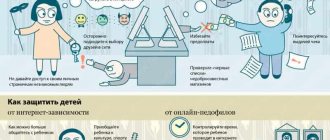1. Robbery, that is, an attack for the purpose of stealing someone else’s property, committed with the use of violence dangerous to life or health, or with the threat of such violence, is punishable by forced labor for a term of up to five years or imprisonment for a term of up to eight years with a fine. in the amount of up to five hundred thousand rubles or in the amount of wages or other income of the convicted person for a period of up to three years or without it.
2. Robbery committed by a group of persons by prior conspiracy, as well as with the use of weapons or objects used as weapons, is punishable by imprisonment for a term of up to ten years with a fine in the amount of up to one million rubles or in the amount of the wages or other income of the convicted person. for a period of up to five years or without it and with restriction of freedom for a period of up to two years or without it.
3. Robbery committed with illegal entry into a home, premises or other storage facility, or on a large scale, is punishable by imprisonment for a term of seven to twelve years with a fine in the amount of up to one million rubles or in the amount of the wages or other income of the convicted person for the period up to five years or without it and with restriction of freedom for a term of up to two years or without it.
4. Robbery committed: a) by an organized group; b) on an especially large scale; c) with the infliction of grievous harm to the health of the victim - shall be punishable by imprisonment for a term of eight to fifteen years with a fine in the amount of up to one million rubles or in the amount of the wages or other income of the convicted person for a period of up to five years, or without it and with restriction of freedom for for a period of up to two years or without it.
Commentary on Article 162 of the Criminal Code of the Russian Federation
1. The objective side of the crime of robbery is characterized as an attack committed with the use of violence dangerous to the life or health of the victim, or with the threat of such violence.
An attack is characterized by surprise, swiftness, violent pressure, and the desire to take the victim by surprise. It can be obvious or disguised, expressed in an obvious or secret impact on the victim with nerve paralytic, toxic or intoxicating agents introduced into the victim’s body against his will or by deception in order to bring him into a helpless state (clause 23 of the Resolution of the Plenum of the Supreme Court of the Russian Federation “On Judicial practice in cases of theft, robbery and robbery").
2. Violence dangerous to life or health should be understood as violence that resulted in the infliction of grave and moderate harm to the health of the victim, as well as the infliction of minor harm to health, causing a short-term health disorder or a minor permanent loss of general ability to work. Violence will be life-threatening even if the method of its use created a real danger of death, although it did not cause any harm to health (for example, holding the victim under water, in a gas-filled room). To qualify a crime as robbery, it is sufficient that the violence creates at least a danger to health.
3. During robbery, not only physical, but also mental violence (threat) is possible, provided that the perpetrator threatened violence that is dangerous to life or health. The nature of the threat can be indicated by the statements of the perpetrator (“I will kill,” “I will stab,” “I will mutilate,” etc.) and his actions (demonstration of a knife, razor blade, etc.).
4. Robbery, unlike other types of theft, is recognized as a completed crime from the moment the attack begins. Since it has the nature of a directed impact, it virtually eliminates the possibility of an assassination attempt.
5. The subjective side is characterized by direct intent and the purpose of stealing someone else’s property.
6. The subject of the crime is a person who has reached the age of 14 years.
7. A qualified type of robbery includes its commission by a group of persons by prior conspiracy or with the use of weapons or objects used as weapons (Part 2 of Article 162).
Weapons in the proper sense of the word (firearms, cold steel, pneumatic and gas) are specifically designed to hit a living target (Article 1 of the Federal Law of December 13, 1996 N 150-FZ “On Weapons”). Objects used as weapons are any objects that can cause injury or death: axes, crowbars, clubs, razors, knives, etc. It does not matter whether they were prepared in advance and specially for a robbery or were randomly picked up at the crime scene.
8. The threat of a weapon that is known to be unusable or an imitation weapon (for example, a dummy pistol or a starting pistol) cannot be considered armed robbery. However, in this case, the victim perceives the attack as a real threat to his life or health, therefore it must be qualified as robbery under Part 1 of Art. 162. If the victim realized that he was being threatened with an unusable or unloaded weapon or an imitation weapon, then the act should be classified as robbery.
9. The use of weapons, if the perpetrator did not have permission to use them, must be qualified according to the totality of crimes provided for in Part 2 of Art. 162 and the corresponding part of Art. 222 of the Criminal Code.
10. Group armed robbery differs from banditry in the absence of signs of stability and the special purpose of attacking citizens or organizations.
11. Particularly qualified types of robbery are its commission with illegal entry into a home, premises or other storage facility or on a large scale (Part 3 of Article 162). The content of these signs is revealed by analyzing previous forms of theft.
12. In part 4 art. 162 provides for liability for robbery committed by an organized group on an especially large scale and causing grievous harm to the health of the victim. For their content, see the commentary to Art. Art. 35, 111 and 158 of the Criminal Code.
Encroachment on life goes beyond the scope of this crime and requires additional qualifications under paragraph “h” of Part 2 of Art. 105 of the Criminal Code. If the intent of the perpetrator included only serious harm to health, and the mental attitude towards the death of the victim was expressed in negligence, the act must be qualified under the totality of paragraph “c” of Part 4 of Art. 162 and part 4 of Art. 111 of the Criminal Code.
13. Theft, which began as theft or robbery, may develop into robbery in the process of commission if the perpetrator, in order to take possession of property or retain it after taking it, uses violence dangerous to life or health, or threatens to use such violence.
What qualifies as robbery?
By definition, robbery is a violent form of taking someone else's property. This implies that some form of violence is always applied to the victim, or that the theft occurs with the help of a weapon or the threat of its use. The definition of “weapon” includes any item that can cause harm to health or take the life of a victim:
- stone;
- stick;
- piece of reinforcement;
- knife;
- gun.
However, the methods of committing a crime may vary, and illegal actions may not always be classified as robbery. If an attacker jumps up on a citizen in a gateway, threatening to beat him up in order to get money, the act falls under the definition of robbery. The person is clearly aware of the threat to health, and theft of other people's property occurs.
Another situation is if similar actions are performed by a teenager with a puny build in relation to a strong, adult man. There is no threat here, so the crime can be regarded as hooliganism or a failed robbery attempt. However, if a group of this teenager is located nearby, gloomily playing with baseball bats, the crime again falls under the definition of robbery, moreover, committed by an organized group by prior conspiracy.
Important! Robbery falls under Article 162 of the Criminal Code, which clearly defines the methods of committing crimes and the degree of punishment for the actions committed.
Criminal amnesty and other changes to the Criminal Code of 2021
After release, these citizens will face problems of social adaptation, employment, and starting a family. Otherwise, this may lead to a relapse in the form of committing a socially dangerous act, which means a new court decision and being sent to prison.
On amendments to the Criminal Code of the Russian Federation and the Criminal Procedure Code of the Russian Federation Introduce into the Criminal Procedure Code of the Russian Federation (Collected Legislation of the Russian Federation, 2001, No. 52, Art. 4921; 2002, No. 22 Art. 2027; No. 30 Art.
Amendments to the Criminal Code of the Russian Federation in 2021 under Article 105, Article 162
2. Robbery committed by a group of persons by prior conspiracy, as well as with the use of weapons or objects used as weapons - (as amended by Federal Laws dated July 21, 2004 N 73-FZ, dated December 27, 2009 N 377-FZ, dated 03/07/2011 N 26-FZ) (see text in the previous edition) 3.
“On some issues that arise when courts consider cases of administrative supervision over persons released from places of deprivation of liberty” “On introducing amendments to certain decisions of the Plenum of the Supreme Court of the Russian Federation on criminal cases” “On the practice of courts considering petitions for investigative actions related to with restrictions on the constitutional rights of citizens (Article 165 of the Code of Criminal Procedure of the Russian Federation)"
Amendments to the Criminal Code February 2021 Article 105 162
In criminal cases of crimes for which a punishment of more than five years of imprisonment is provided and which were committed before the date of entry into force of this Resolution by persons who had not reached the age of 16 years at the time of the crime, as well as by persons aged 16 to 18 years, previously not who have served their sentences in educational colonies, the court, if it finds it necessary to impose a sentence of up to five years in prison inclusive, releases these convicts from punishment.
11. This Resolution comes into force on the date of its official publication and is subject to execution within six months. Chairman of the State Duma of the Federal Assembly of the Russian Federation You can find out in detail about the amnesty act in 2021 from our Lawyers for free by calling or leaving a request on our website and our employees will contact you +7 (499) 653-60-72 (Hotline Moscow and Moscow Region, (ext.
Differences between robbery and robbery
At first glance, there are many similar features between such crimes. In particular, for both cases the goal is to steal someone else's property, the attacker acts openly and threatens to use violent actions against the victim. The difference between robbery and robbery is that during robbery there is no threat to the health and life of the victim. In the case of robbery, threats are always justified and pose a real danger . Therefore, robbery is considered a more serious crime.
Difference between crimes
There are several signs that classify robbery and robbery. For example:
- action - with robbery there is always a threat to health and life, with robbery there is not;
- malicious intent - during robbery, violent actions are always used to take possession of the victim’s property; during robbery, they may be absent;
- consequences - robbery implies criminal liability from the moment the illegal actions begin, but it does not take into account whether the plan was completed. A robbery is committed when the accused takes possession of the property;
In addition, the victim must understand that at the time of the crime there is indeed a real threat. For example, if a criminal uses a dummy gun, but the victim is unaware of it, the defendant's actions are classified as robbery. In cases where the victim realizes that the weapon is not real, but gives valuables to the criminal, the action can be regarded as robbery.
Difference between assault and violent robbery
Here, in both cases, violence is implied and the victim receives physical harm. However, the method of committing the crime and the damage caused to health are taken into account.
For example, an attacker tries to take a wallet from a woman’s purse. The victim notices these actions and tries to interfere. However, the attacker pushes the victim, snatches the bag and runs away. The woman fell and received bruises and abrasions, but there was no intent to cause harm to health in the actions of the criminal, so the crime is considered robbery, although violence was used.
A similar situation, but having discovered that his actions were discovered, the criminal took out brass knuckles and struck him in the temple, after which he snatched his bag and ran away. Here, the victim’s health will be seriously damaged, so the crime falls under the article of robbery.
Amendments to the Criminal Code of the Russian Federation in 2021 under Article 105, Article 162
for reasons of political, ideological, racial, national or religious hatred or enmity, or for reasons of hatred or enmity towards any social group; (Clause “l” as amended by Federal Law No. 211-FZ of July 24, 2007) m) for the purpose of using the victim’s organs or tissues, - (as amended.
Thus, in the next month, thefts of up to 5,000 thousand rubles will be decriminalized for everyone, except for persons subject to administrative punishment for petty theft. Article 228 of the Criminal Code of the Russian Federation: latest amendments for 2021 Chapter 25 of the above article determines the punishment for each of the offenses.
What is robbery? Definition, corpus delicti and criminal legal characteristics of robbery
- subject (the one who commits the crime);
- object (social relations encroached upon by the perpetrator);
- subjective side (presence of guilt, intent);
- objective side (actions, consequences, the presence of a cause-and-effect relationship between them).
Object of the crime under Art. 162 of the Criminal Code of the Russian Federation
Judicial practice is presented in Post. Plenum of the Supreme Court of the Russian Federation of December 27, 2002 N 29 “On judicial practice in cases of theft, robbery and robbery.” It is this document that judges are guided by when making decisions.
For example, while drinking alcohol, I., together with his friend D., stole his friend’s property through robbery. At the same time, I. hit victim D. several times on the head with a glass bottle and took the victim’s mobile phone. After some time, victim D. died from his injuries.
This is a swift action by the attacker against the victim. An attack can be open and demonstrative - that is, obvious to the victim. The attack may also be hidden from the victim. This is possible when someone hits the head from behind with a heavy object or is shot from around the corner.
Robbery, Article 162 of the Criminal Code of the Russian Federation – part 4: punishment in the form of imprisonment for a term of 8 to 15 years.
In addition to property or money, the criminal also encroaches on the health and life of the victim. The attack was committed with the use of violence dangerous to the life and health of the victim or with the threat of such violence.
Latest amendments to Article 158 of the Russian Federation in 2021 Exempt from punishment those sentenced to imprisonment for crimes committed through negligence under the age of 18, who do not fall under subparagraphs 1 and 2 of paragraph 1 of this Resolution, as well as women with minor children, pregnant women , women over 55 years of age and men over 60 years of age, men with children under 3 years of age, persons with disability group I, II or III, sentenced to imprisonment for the same crimes, not falling under paragraph 2 of this Resolutions, having served at least one quarter of the imposed sentence. 4. Changes in the criminal code of the Russian Federation in 2021 of the Criminal Code of the Russian Federation.
What changes have occurred in the Criminal Code of the Russian Federation in 2021
- a fine in the amount of 300,000 to 500,000 rubles or in the amount of wages or other income of the convicted person for a period of two to three years;
- compulsory work for up to 480 hours;
- correctional labor for a period of one to two years;
- forced labor for up to five years;
- imprisonment for a term of up to five years.
Changes to the Criminal Code of the Russian Federation from January 10, 2021
Apology of Protest lawyer Alexander Peredruk does not understand why this law was adopted at all, since in practice he has not encountered anyone having claims related to the financing of public events.
Robbery under Article 162 Part 3 is quite common, and sometimes difficult in terms of sentencing. It may overlap with other articles of the criminal code, depending on the severity and nature of the act. The difficulty is that there are quite similar crimes and in order to distinguish them, it is necessary to have an understanding of all the intricacies of the case in question. It is necessary to take into account the state in which the offender was at the time of his act. This could be any alcohol or drug intoxication, various diseases implying a mental health disorder or a state of passion.
You may like => Benefits for children of veterans BD discount on vouchers to health camps 50 percent once a year. Free meals twice a day.
Defining Features
According to current legislation, during robbery attacks there is always an attack on the property and person of the victim. This is the motive and corpus delicti. However, the use of violence always implies additional actions on the part of the suspect: he put a knife to his throat, swung a stick, hit him on the head with a stone. These are already defining signs that indicate the severity of the crime committed. Let's consider how such signs are classified under Article No. 162 of the Criminal Code of the Russian Federation.
Using weapons or other objects
The purpose of such crimes is to intimidate the victim in order to seize his property. Moreover, the elements of the crime include not only the actual use of the object in relation to the victim. Weapons can be:
- demonstrate;
- attach to a part of the victim’s body;
- use as a threat to the victim’s family and friends;
- use in relation to pets.
Those guilty of committing such crimes may face up to 10 years in prison with compensation in an amount not exceeding 1,000,000 rubles.
Attack committed by a group of persons
There is always a preliminary conspiracy here, when responsibilities are clearly distributed between the attackers.
For example, one participant directs accomplices to the victim, the second commits an attack, the third controls the situation to warn of danger. Such actions also provide for a penalty of 10 years in prison with a fine of up to 1,000,000 rubles.
Important! As legal practice shows, of the three suspects listed above, only two can be held responsible. If the group members do not hand over the gunner to the police, it will be very difficult to prove this person’s involvement in the crime.
Robbery with entry into an apartment or other premises
Such atrocities are based on the gullibility of citizens, when a housing office representative who rings the doorbell suddenly pulls out a pistol or knife, demanding to give up the money and valuables in the house.
In this case, the victim may be beaten to get what they want. For such actions you can get 7-12 years in prison with a mandatory fine of up to 1,000,000 rubles.
Causing grievous harm
Here it is implied that as a result of the robbery the victim received serious injuries that pose an immediate threat to life or remained disabled.
The accused faces up to 15 years of detention with a fine of 1,000,000 rubles.
Causing damage on a large scale
If material assets worth more than 250,000 rubles are stolen from the victim, it is considered that the robbery was committed on a large scale.
The accused may face imprisonment for up to 12 years and a fine of 1,000,000 rubles.
Causing damage on an especially large scale
This definition means stolen property in an amount exceeding 1,000,000 rubles.
Punishable by 8-15 years in prison and a fine of up to 1,000,000 rubles.
Organized group
Here, too, there is a preliminary conspiracy of several persons, but the crime resulted in serious harm to health or was committed on an especially large scale.
Punishable by up to 15 years in custody and a fine of 1 million rubles.





